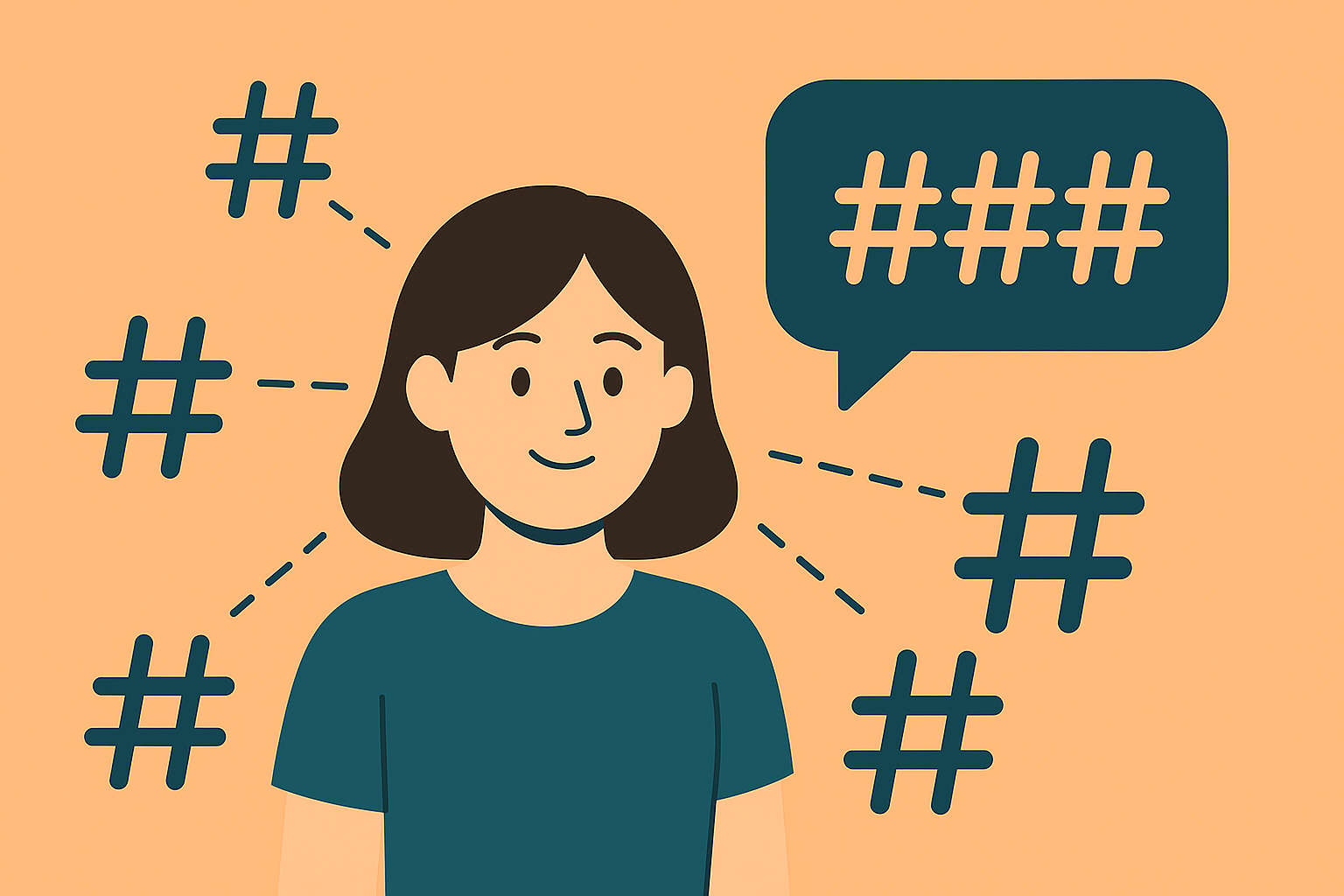Hashtags are words or phrases preceded by the # symbol, used to categorize content and make it discoverable by a wider audience on social media platforms. By adding hashtags to your posts, you help your content appear in search results and increase the chances of it being seen by users who are interested in that specific topic. Hashtags can significantly boost your visibility, engagement, and reach on platforms like Instagram, Twitter, Facebook, LinkedIn, and TikTok.
Here’s how you can effectively use hashtags to increase your visibility:
1. What Are Hashtags?
Hashtags are a form of metadata that groups similar content together. For example, if you use the hashtag #fitness, your post will appear alongside all other content tagged with #fitness, allowing users who follow or search that hashtag to discover your post. Hashtags can be broad, like #fashion or #health, or niche, such as #sustainablefashion or #homeworkouts.
Hashtags help categorize content and make it easier for users to find posts that align with their interests. They also help you connect with other users who are actively engaging with content related to the same topic.
2. Why Should You Use Hashtags?
Using hashtags effectively can have several benefits for your social media strategy:
- a. Increased Reach: Hashtags expose your content to a broader audience beyond your followers. When you use popular or trending hashtags, your posts are more likely to show up in search results or the feeds of users interested in those topics.
- b. Improved Engagement: Posts with relevant hashtags tend to receive more engagement, as they’re discoverable by users searching for that specific content. More engagement (likes, shares, comments) can improve your post’s visibility in the platform’s algorithm.
- c. Better Discoverability: Hashtags allow users to easily find content in a specific niche. Using the right hashtags increases your chances of being discovered by users who are actively looking for topics related to your business or industry.
- d. Brand Awareness: Branded hashtags help build your unique online presence. When users tag your hashtag in their posts, it increases brand awareness and encourages user-generated content.
3. Types of Hashtags to Use
Not all hashtags are created equal. To maximize your visibility, it’s essential to use a mix of hashtags that cater to different aspects of your content. Some common types of hashtags include:
- a. General or Trending Hashtags: These are popular, broad hashtags like #love, #instagood, #fitness, or #photooftheday. While these hashtags have a large audience, they are also highly competitive, so it’s harder to stand out among other posts.
- b. Niche Hashtags: These hashtags are more specific to your industry, business, or target audience, such as #sustainablefashion or #smallbusinessmarketing. Niche hashtags help you target a more specific audience that is likely to be interested in your content.
- c. Location-Based Hashtags: If you’re targeting a specific geographic location, use location-based hashtags like #NYCfashion or #LondonEats. These help your posts get discovered by users in or interested in that area.
- d. Branded Hashtags: Create unique hashtags for your brand, products, or campaigns, such as #MyBrandJourney or #ProductLaunch2024. Encourage followers to use your branded hashtags to build community and promote user-generated content.
- e. Event or Campaign Hashtags: When running promotions, events, or marketing campaigns, use relevant hashtags like #BlackFridayDeals or #NationalCoffeeDay. These hashtags often trend during specific events and can increase engagement during those times.
4. How to Use Hashtags Effectively
Using hashtags strategically can help you increase your visibility on social media. Here’s how to do it effectively:
- a. Research Relevant Hashtags: Before adding hashtags to your posts, research which ones are popular and relevant to your content. Use social media tools or platforms like Hashtagify or RiteTag to find trending or highly searched hashtags in your industry.
- b. Use a Mix of Popular and Niche Hashtags: Don’t rely solely on general hashtags. Combine a mix of broad, popular hashtags with more specific, niche ones to balance reach with targeted engagement. For example, if you’re posting about eco-friendly beauty products, you might use #EcoBeauty (niche) along with #Beauty (popular).
- c. Limit the Number of Hashtags: While it can be tempting to use many hashtags, too many can make your posts look spammy. The ideal number of hashtags depends on the platform:
-
- 1. Instagram: Between 5-15 hashtags is ideal. Instagram allows up to 30 hashtags per post, but using fewer targeted hashtags can often result in better engagement.
- 2. Twitter: One or two hashtags per tweet works best. Twitter has a character limit, so it’s important to keep your hashtags concise.
- 3. LinkedIn: 3-5 hashtags per post are recommended to keep it professional and relevant.
- 4. TikTok: 3-5 hashtags, including trending ones, will help increase the visibility of your content.
- d. Avoid Overused Hashtags: Avoid using hashtags that are overly saturated with content, such as #love or #fun. While these might seem like popular options, they are so widely used that your post may get lost in the crowd.
- e. Create Your Own Hashtags: If you’re running a specific campaign, event, or promotion, create a unique hashtag that reflects your brand. This will help your audience follow and participate in the campaign, as well as generate user-generated content.
5. Monitor Hashtag Performance
Once you start using hashtags, track their performance to see which ones are driving engagement and visibility. Most social media platforms offer built-in analytics tools where you can review how your posts perform with different hashtags. This allows you to refine your strategy and use the most effective hashtags for future posts.
6. Hashtags for Campaigns and Engagement
Encourage your followers to participate in your brand’s hashtag campaigns. For example, you could host a contest where users must post photos using your branded hashtag to win a prize. This increases user-generated content, fosters community, and enhances visibility through organic sharing.
Conclusion
Hashtags are a powerful tool for increasing your visibility on social media. By using the right mix of general, niche, and branded hashtags, you can help your content get discovered by a wider audience. Make sure to research relevant hashtags, monitor their performance, and use them strategically to enhance your social media engagement. When done right, hashtags can significantly amplify your social media presence and help you connect with your target audience.








